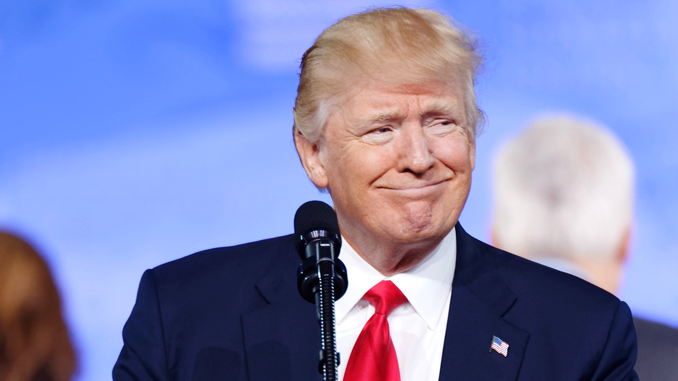
India officially raised tariffs on 28 U.S. products yesterday, in direct response to the United States ending India’s preferential trade status and increasing tariffs against them.
The official decision was presented on Friday by India’s Ministry of Finance. The products affected include apples, walnuts, chickpeas, lentils and almonds, further limiting international markets for American farmers. They were chosen in response to American taxes on products like steel and aluminum.
This means that out of the top ten United States trading partners – Mexico, Canada, China, Japan, Germany, South Korea, the United Kingdom, France, India and Taiwan – the United States is currently engaged in a trade war with three of them (China, Japan and India); has negotiated a potential end to another two but has severely threatened its completion with two others (Mexico and Canada) and is threatening one with two others (France and Germany, as well as escalating the Japanese war via car tariffs; France, with wine tariffs). As South Korea has recently completed a deal with the U.S., this leaves Taiwan, the tenth largest U.S. trading partner, as the only one with whom we have not initiated or threatened a trade war over the past two years.
Taiwan’s economy, meanwhile, has been damaged by the U.S. / China trade war.
It is considered unwise by military tacticians to fight a multi-front war. Doing so requires forces to be split rather than concentrated and creates the need for multiple supply chains, as well as draining available resources quickly.
Thankfully, “trade war” does not involve military action (generally); there are some similarities, however. A concentrated effort on trade requires experienced people who are, if not expert, at least adequate and informed negotiators. There is a strong case to be made that America’s bloated government ranks have put it in a favorable position to perform duplicative actions.
Even with that acknowledgement, the sheer magnitude of the task at hand must be considered. The U.S. Trade Representative Office relies upon inter-office agencies and outside advisors. There are 19 agencies, primary among them (according to the USTR website) the Trade Policy Staff Committee, which is comprised of more than 90 subcommittees, each of which has its own area of expertise. The outside advisors are divided into 26 distinct committees with a total of roughly 700 individuals who are, at least theoretically, experts about a particular field, commodity, or foreign nation.
700 experts and 19 bureaucratic committees is an impressively large force for a trade negotiation. It is inadequate for the task of holding simultaneous negotiations with most of the largest American trading partners and dozens of lesser trading partners throughout the world. By comparison, we have more than 11,000 diplomats stationed throughout the world whose jobs are primarily to maintain good relations with other nations and monitor events therein.
The results of this burden are already apparent. The negotiation with South Korea ended with bruised feelings by the Koreans and no appreciable gain by the United States. The negotiation with Mexico and Canada is nearly over – maybe – and has had similarly few benefits to the U.S. beyond political rhetoric and limits on activity which had never been intended to exist. The negotiations with China have been announced to be nearing an end on more than a half-dozen occasions, with no actual agreement reached.
This is a practical demonstration of Trump’s ability to negotiate. It mirrors his many failures across his business life, and should be a cause of grave concern to those who continue to place faith in his putative expertise in such matters.
